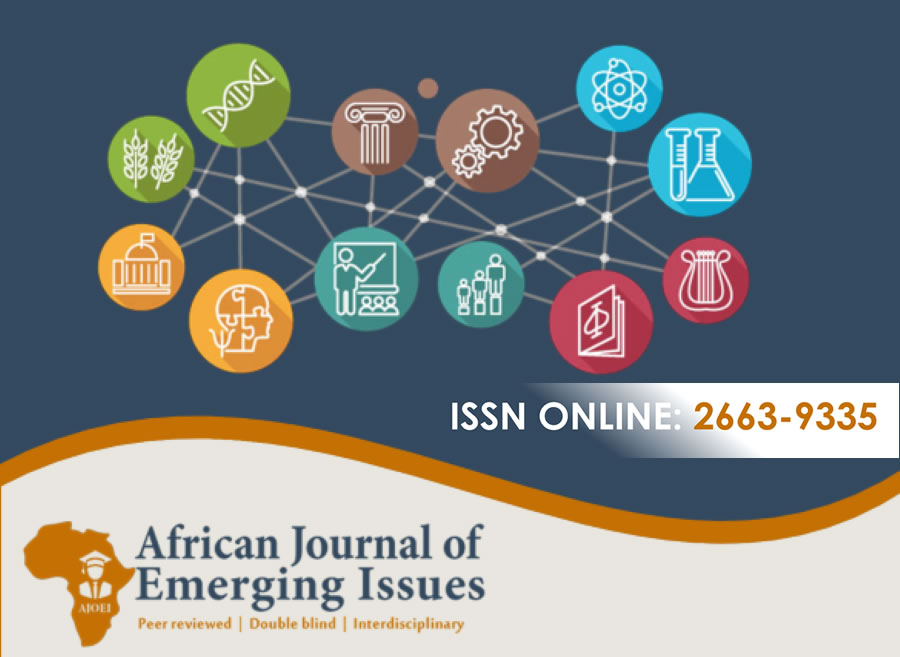CRITICAL EVALUATION OF SELF-LEADERSHIP
Abstract
Purpose of the study: To explore why self-leadership should serve as the foundational principle for all leadership practices.
Method used: Literature-based review. The study analysed existing literature on self-leadership and its role in effective leadership.
Findings: Self-leadership is the ability to actively influence oneself and one's future. It encompasses self-awareness, self-motivation, and self-development. Self-leadership is essential for effective leadership practices. Leaders who master self-leadership can think strategically, allocate resources wisely, and foster a culture of self-leadership within their organizations. Self-leadership is not only beneficial for individual growth but also for creating a collaborative and effective leadership environment.
Conclusion: Self-leadership should serve as the foundational principle for all leadership practices. It is essential for individual and organizational success. Leaders who recognize and embrace self-leadership are better equipped to achieve their goals and create a positive and productive work environment.
Keywords: Critical, Evaluation, Self-Leadership
References
Alavarez, J. (2005). Leading from the inside out. Leadership Excellence: Journal of Leadership Development, 22(1), 14-15.
Arthur, J. B., & Rousseau, D. (1994). Complex issues in the study of self-development. Human Relations, 47(9), 1173-1188.
Bandura, A. (1977). Self-efficacy: Toward a unifying theory of behavioural change. Psychological Review, 84(2), 191-215.
Bosley, L., & Hobby, M. (2018). Achieving self-leadership. Harvard business review, 96(3), 81-89.
Covey, S. R. (1989). The seven habits of highly effective people. New York, NY: Simon and Schuster.
Alvarez, S., Alemany, P., Casanova, D., Cirera, J., Llunell, M., & Avnir, D. (2005). Shape maps and polyhedral interconversion paths in transition metal chemistry. Coordination chemistry reviews, 249(17-18), 1693-1708.
Day, A., Sinclair, R., McArthur, S. R., & Oades, L. G. (2015). Self-leadership. In Icfaian handbook of organizational behaviour (pp. 148-179). Icfai University Press.
Derks, D., Bakker, A.B., & Glas, C.A.W. (2014). Self-Leadership: Towards a Strategic Perspective. International Journal of Management Reviews, 16(2), 215-235.
Druskat, V.U. (2012). Self-leadership in Practice. Harvard Business Review, 90(1).
DuBrin, A. (2009). Essentials of management. Mason, OH: Cengage Learning.
Ellison, B. & F. Day. (2015). Identity-Based Self-Leadership: An Emerging Leadership Paradigm. Leadership & Organizational Development Journal, 36(3), 330-346.
Fogarty, G. J., Rock, G. W., Tehrani, M. A., & Lopez, T. L. (2019). A Review of Self-Leadership Theory. Current Psychology, 38(4), 595–615. https://doi.org/10.1007/s12144-019-00122-y
Gülān, I. (2017). Self-leadership: The New Management Skill. Genel İşletme Dergisi, (10), 13–20.
Kirkpatrick, S.A. & Locke, E.A. (1996). Direct and indirect effects of three core charismatic leadership dimensions on performance and attitudes. Journal of Applied Psychology, 81(1), 36-51.
Konovsky, M., Humphrey, R. H., Pine, M., Sitkin, S., & Berger, J. (1994). Effects of procedural and distributive justice on reactions to pay Raise Decisions. Academy of Management Journal, 37(3), 672- 680.
Latham, G.P., & Locke, E.A. (1991). Self-leadership: Toward an expanded theory of self-influence processes in organizations. The Leadership Quarterly, 2(1), 57-70.
Luthans, F., Avolio, B., Avey, J., & Norman, S. (2006). Positive psychological capital: Measurement and relationship with performance and satisfaction. Personnel Psychology, 59, 541-572.
McCallum, A. & Kelloway, E. (2015). Self-Leadership: A Conceptual Overview and Implications for Creative Performance. Journal of Creative Behaviour, 49(4), 259-280.
Neck, C. & Manz, C. (2005). Using self-leadership as a pathway to effective leadership. Leadership & Organization Development Journal, 26(3), 207-219.
Northouse, P. G. (2020). Leadership: Theory and Practice (8th ed.). SAGE Publications.
Smith, M. K. (2009). Applying self-leadership: A Career Guide. Lanham, MD: University Press of America.
Sprigg, C. A., & Schwartz, C. A. (2014). The six ps of self-leadership: An examination of the process, practices, and principles. Industrial and Organizational Psychology, 7(1), 93-109.
Uruci, P., Rroku, E., & Gashi, Y. (2018). Organizational Culture: Key Factors of a Successful Organizational Performance. European Scientific Journal, 14(5), 185–194.





